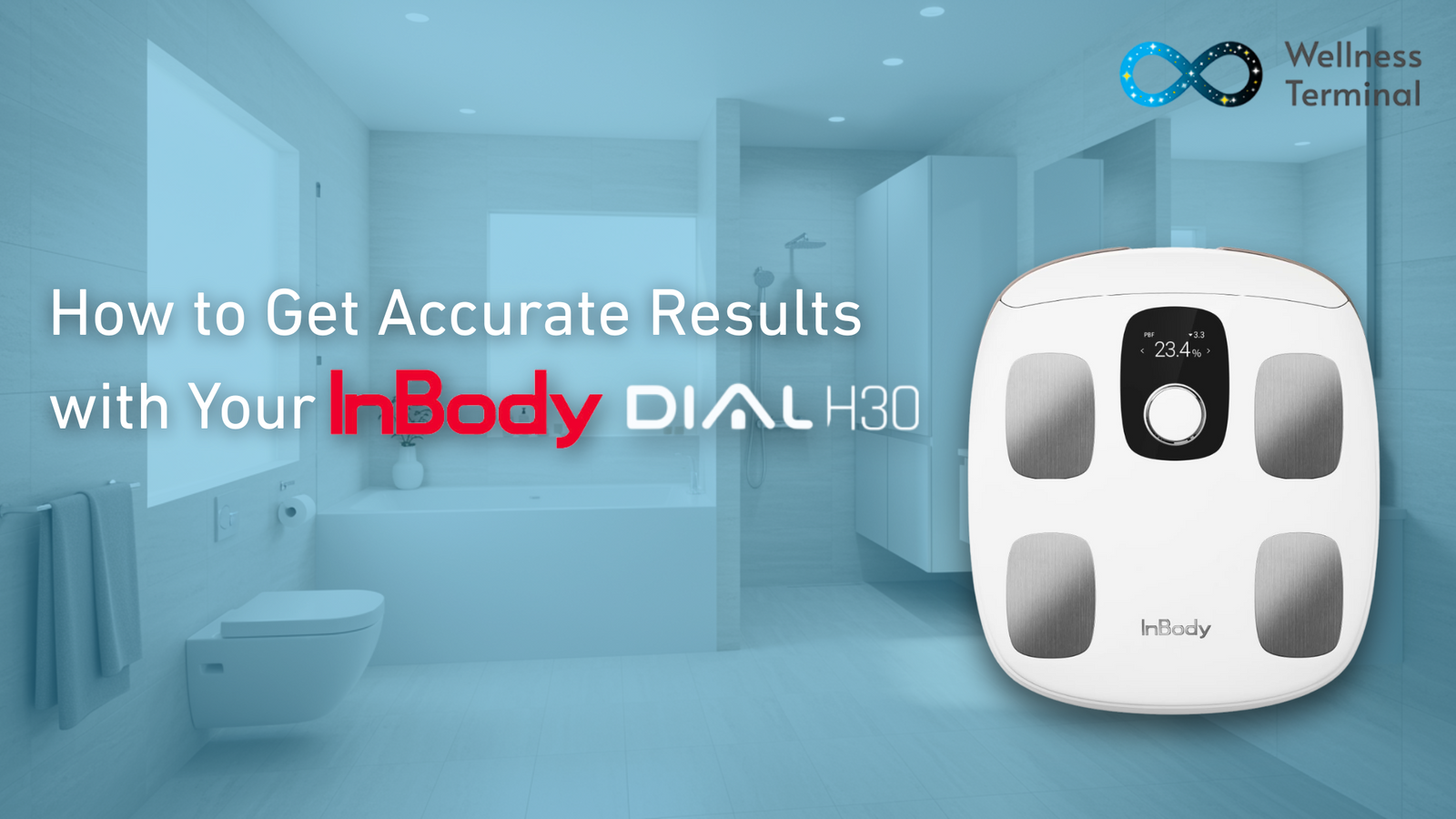If you’ve ever been frustrated with inconsistent readings on your InBodyDial H30, you’re not alone. InBody body composition analyzer uses bioelectrical impedance analysis (BIA) to measure weight, body fat percentage, skeletal muscle mass, and visceral fat level. Like any precision instrument, accurate results depend on following proper testing procedures. Based on the latest guidelines from the official InBody manuals and support resources, here are updated best practices and essential tips to ensure you get the most reliable readings.
Optimal Testing Conditions for Accurate Results
Test on an Empty Stomach
Food and fluids in your stomach can skew weight measurements and affect the analysis of body composition. For the most accurate results, take your InBody test before breakfast or at least two hours after eating.
Morning Testing is Best
Because body water distribution can change throughout the day, morning tests provide a more consistent baseline. Testing after waking—before physical activity or a meal—helps minimize fluctuations.
Use the Bathroom First
Make sure to use the restroom before testing. Residual waste or fluids not considered part of your body’s composition can increase weight readings unexpectedly.
Test Before Exercise and Showering
Physical activity and bathing can temporarily alter body water distribution through sweating or increased blood flow. To maintain consistency, perform your InBody test before working out or showering.
Stand for Five Minutes Before Testing
If you’ve been sitting or lying down, stand for about five minutes prior to testing. This helps ensure that your body water is evenly distributed, minimizing transient shifts in measurements.
Proper Testing Posture: The Key to Accurate Measurements
Correct Arm Posture
-
Keep your armpits from touching your torso. If needed, wear a light, short-sleeved shirt.
-
Hold the handle at the same height as your pelvis—avoid positioning it too high or allowing it to rest against your stomach.
-
Keep your arms fully extended and straight (avoid bending the elbows).
Correct Hand Placement
-
Place your thumb on the rectangular electrode.
-
Make sure your left and right hands do not touch each other while gripping the handle.
-
Ensure that every finger is in complete contact with its corresponding electrode.
Correct Leg and Foot Position
-
Your thighs should remain separated—if they tend to touch, wear shorts or a skirt/pants that keeps them apart.
-
Stand barefoot on the footplate. Socks or stockings can interfere with the electrical contact.
-
Align your heels with the ends of the foot electrodes and keep your feet separated without any clothing or objects between them.
Note: Maintaining the proper posture throughout the entire test is vital. Any contact between your limbs and your body (for example, your arms or thighs touching) can distort the impedance readings.
Common Factors That Affect Test Accuracy
Dry Hands and Feet
Dry or callused skin can disrupt electrical conductivity. Use a damp or wet wipe (as recommended by InBody) to moisten your hands and feet just before testing.
Metal Implants
Be aware that if you have metal implants (pins, prostheses, etc.), your results might be less accurate. While the device is designed for general use, metal can alter the current’s path.
Environmental Factors
Electronic interference is a common source of error. Avoid conducting your test near:
-
Appliances (refrigerators, televisions)
-
Fluorescent lighting
-
Power outlets or areas crowded with Bluetooth devices
Always test in a calm, stable environment on a flat, hard surface to ensure proper functioning and reliable readings.
Step-by-Step Guide to Taking an Accurate Test
-
Preparation:
-
Confirm that you have followed all optimal testing conditions (empty stomach, morning test, after using the bathroom, before exercise/showering, and standing for five minutes).
-
Power On:
-
Place the device on a stable, flat surface. Stand barefoot on the footplate to activate the scale.
-
Check that the weight display shows “0.0 lb” before stepping on.
-
Gripping the Handle:
-
Grasp the handle securely with your thumb on the electrode.
-
Follow the proper arm, hand, and posture guidelines detailed above.
-
Complete the Test:
-
Remain still until the device reaches 100% completion.
-
Once completed, review the results on the device’s LCD or via the InBody App if you have connected it.
-
Syncing Data:
-
If you use the InBody App, ensure your nickname has been registered for accurate user recognition and automatic data syncing.
Troubleshooting Common Issues
Error Messages (e.g., “Please check your thumb and heel”)
-
Moisten your hands and feet with a damp wipe if they are too dry.
-
Double-check your posture to ensure no inadvertent contact between limbs and the body.
-
If the error persists, reposition the device in a location away from potential electronic interference.
Weight Measurement Inaccuracies
-
Make sure the device is on a hard, flat surface free of objects (like carpet, mats, or debris).
-
Verify that “0.0 lb” is displayed before beginning the measurement.
-
Check for any damage to the supportive feet or base of the device that could affect stability.
Remember: Consistency is key. Performing your tests under similar conditions each time ensures the most comparable and reliable readings.
Maintaining Your InBodyDial H30
Handle Cable and Electrodes:
-
Avoid pulling or stretching the handle cable excessively, as this can compromise its integrity.
-
Clean the electrodes periodically with a soft cloth and a suitable sterilizing agent (such as ethyl alcohol). Never pour liquid directly onto the device.
Battery and Storage:
-
For optimal performance, replace the AA batteries when needed, and always insert them correctly.
-
When storing the device for an extended period, remove the batteries and keep the device in a dry area away from direct sunlight or excessive moisture.
Conclusion
Achieving accurate readings from your InBodyDial H30 is not complicated—it simply requires following the proper testing conditions and posture guidelines consistently.
By testing on an empty stomach in the morning, ensuring proper pre-test preparations, maintaining correct posture, and troubleshooting common issues diligently, you can trust your device’s data to effectively guide your health and fitness journey.
Keep in mind that slight variations are normal; for the most reliable progress tracking, always test under as similar conditions as possible.

